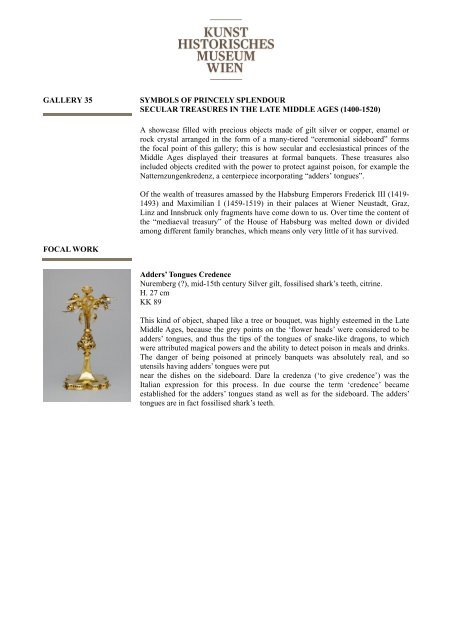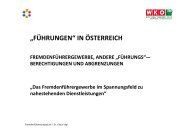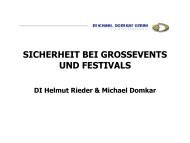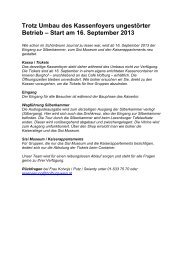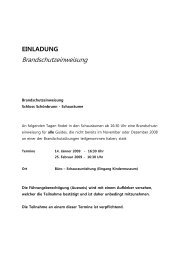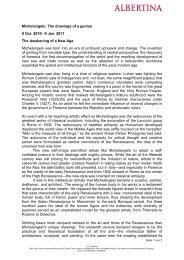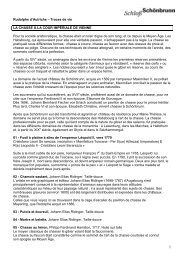kunstkammer vienna the cradle of the museum - Freizeitbetriebe ...
kunstkammer vienna the cradle of the museum - Freizeitbetriebe ...
kunstkammer vienna the cradle of the museum - Freizeitbetriebe ...
Create successful ePaper yourself
Turn your PDF publications into a flip-book with our unique Google optimized e-Paper software.
GALLERY 35 SYMBOLS OF PRINCELY SPLENDOUR<br />
SECULAR TREASURES IN THE LATE MIDDLE AGES (1400-1520)<br />
FOCAL WORK<br />
A showcase filled with precious objects made <strong>of</strong> gilt silver or copper, enamel or<br />
rock crystal arranged in <strong>the</strong> form <strong>of</strong> a many-tiered “ceremonial sideboard” forms<br />
<strong>the</strong> focal point <strong>of</strong> this gallery; this is how secular and ecclesiastical princes <strong>of</strong> <strong>the</strong><br />
Middle Ages displayed <strong>the</strong>ir treasures at formal banquets. These treasures also<br />
included objects credited with <strong>the</strong> power to protect against poison, for example <strong>the</strong><br />
Natternzungenkredenz, a centerpiece incorporating “adders’ tongues”.<br />
Of <strong>the</strong> wealth <strong>of</strong> treasures amassed by <strong>the</strong> Habsburg Emperors Frederick III (1419-<br />
1493) and Maximilian I (1459-1519) in <strong>the</strong>ir palaces at Wiener Neustadt, Graz,<br />
Linz and Innsbruck only fragments have come down to us. Over time <strong>the</strong> content <strong>of</strong><br />
<strong>the</strong> “mediaeval treasury” <strong>of</strong> <strong>the</strong> House <strong>of</strong> Habsburg was melted down or divided<br />
among different family branches, which means only very little <strong>of</strong> it has survived.<br />
Adders’ Tongues Credence<br />
Nuremberg (?), mid-15th century Silver gilt, fossilised shark’s teeth, citrine.<br />
H. 27 cm<br />
KK 89<br />
This kind <strong>of</strong> object, shaped like a tree or bouquet, was highly esteemed in <strong>the</strong> Late<br />
Middle Ages, because <strong>the</strong> grey points on <strong>the</strong> ‘flower heads’ were considered to be<br />
adders’ tongues, and thus <strong>the</strong> tips <strong>of</strong> <strong>the</strong> tongues <strong>of</strong> snake-like dragons, to which<br />
were attributed magical powers and <strong>the</strong> ability to detect poison in meals and drinks.<br />
The danger <strong>of</strong> being poisoned at princely banquets was absolutely real, and so<br />
utensils having adders’ tongues were put<br />
near <strong>the</strong> dishes on <strong>the</strong> sideboard. Dare la credenza (‘to give credence’) was <strong>the</strong><br />
Italian expression for this process. In due course <strong>the</strong> term ‘credence’ became<br />
established for <strong>the</strong> adders’ tongues stand as well as for <strong>the</strong> sideboard. The adders’<br />
tongues are in fact fossilised shark’s teeth.


